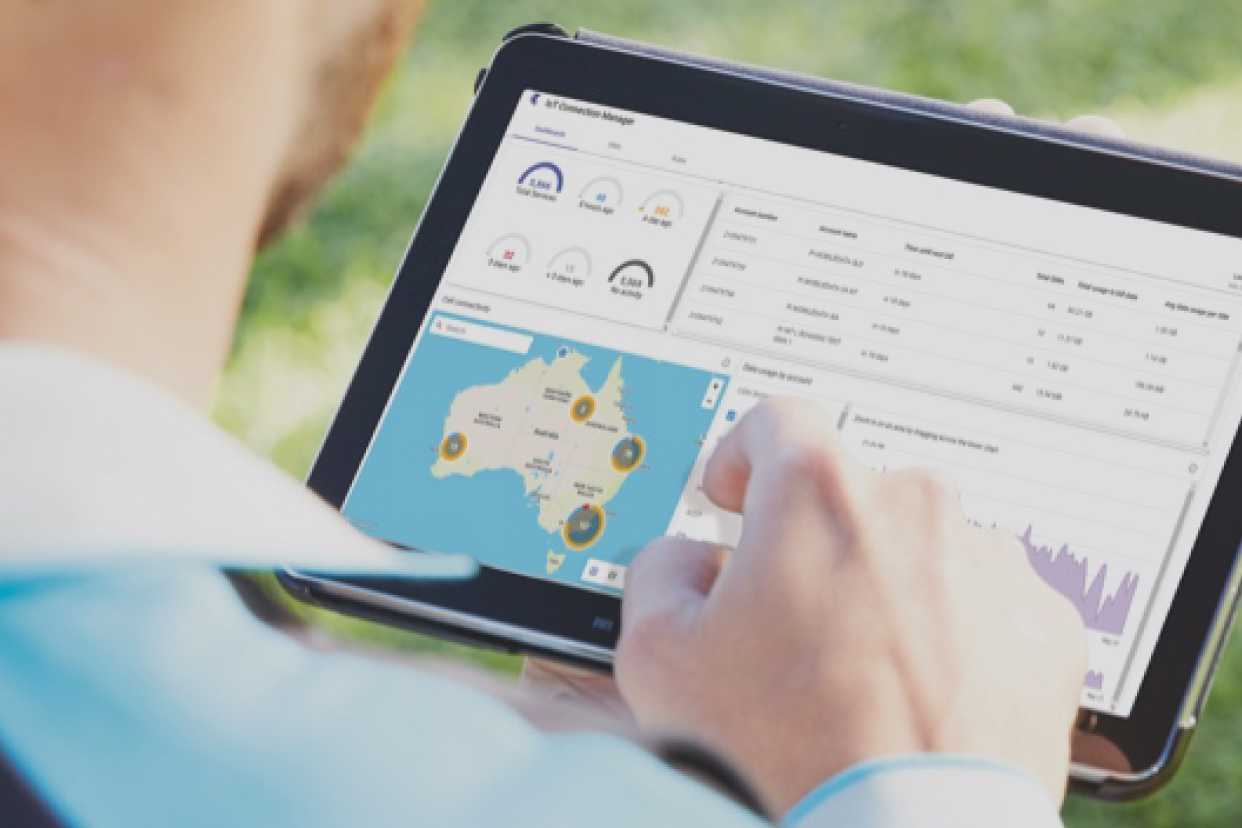
Understanding Vehicle Fleet Management Systems

Fleet management in Australia involves a systematic approach tailored to maintaining, tracking, and optimising the use of vehicles in a variety of industries. This management encompasses a range of activities from vehicle maintenance, safety compliance, and fuel management to strategic acquisition and disposition. The effectiveness of a fleet management system hinges on its ability to integrate advanced technology with well-defined operational procedures, ensuring businesses can achieve both short-term performance goals and long-term strategic objectives.
Key Components of Fleet Management
Effective fleet management systems share several key components that ensure they deliver value. These include real-time vehicle tracking, data analytics for decision-making, and integration with other business processes. This backbone supports a fleet manager’s daily operations and strategic planning.
Technology in Fleet Management: What’s New?
In recent years, Australian fleet management has seen significant technological advancements. GPS tracking, telematics, and cloud-based software solutions now allow for more precise tracking and management of vehicles than ever before. These technologies also facilitate improved communication between drivers and fleet managers, optimizing route planning and enhancing overall efficiency.
Legal and Safety Compliance in Fleet Management
Compliance with local and national laws is crucial for fleet management in Australia. This includes adhering to safety standards, environmental regulations, and vehicle inspection requirements. Implementing a fleet management system that emphasises compliance not only helps avoid legal repercussions but also ensures the safety and reliability of the fleet.
Implementing a Fleet Management System

Implementing an effective fleet management system requires careful planning and execution. The success of this system greatly depends on choosing the right technology and ensuring that staff are adequately trained to use it.
Steps to Deploy a Fleet Management Strategy
Deployment starts with a clear understanding of the organisation’s needs and a detailed plan that outlines the steps necessary to meet these needs. It’s important to set realistic goals and timelines for implementation to ensure a smooth transition.
Selecting the Right Fleet Management Software
Choosing the right software is critical. The best fleet management software for Australian businesses should offer features like real-time tracking, fuel management, compliance tracking, and easy integration with existing systems.
Training for Success: Preparing Your Team
Successful implementation also depends on properly training staff. Comprehensive training ensures that all team members are proficient in using the new system and understand the processes that will drive improvements in fleet management.
Cost Efficiency and Sustainability in Fleet Management
A key goal of fleet management is to reduce costs and enhance sustainability. This is achieved by optimising various aspects of fleet operation, from fuel consumption to vehicle maintenance.
Reducing Operational Costs through Strategic Management
Strategic management involves regular review and optimization of fleet operations. Techniques like route optimization, regular vehicle maintenance, and driver training programs are essential for minimising operational costs.
Fuel Management Techniques
Effective fuel management is crucial for cost reduction. Implementing fuel cards, monitoring fuel consumption, and training drivers in economical driving practices are all effective strategies.
Vehicle Maintenance and Lifecycle Management
Proper maintenance extends the life of vehicles and reduces costly breakdowns. Implementing a lifecycle management plan ensures that vehicles are replaced at the optimal time, balancing cost with performance.
Leveraging Data for Fleet Optimization
Data plays a crucial role in modern fleet management. By analysing data collected from vehicles, fleet managers can make informed decisions that enhance efficiency and service quality.
Analytical Tools and Their Impact on Fleet Management
Analytical tools allow fleet managers to track performance metrics and identify areas for improvement. These tools can analyse everything from fuel usage to driver behaviour, providing insights that lead to better fleet management.
Challenges and Solutions in Fleet Management

Managing a fleet presents a range of challenges, from technological issues to changes in regulatory landscapes.
Addressing Common Roadblocks
Common roadblocks include adapting to new technologies, managing costs, and ensuring regulatory compliance. Effective strategies often involve staying updated with industry trends and ongoing staff training.
Technological Challenges and Solutions
While technology offers numerous benefits, it also comes with challenges such as data security and system integration. Choosing secure, reliable software solutions and using best practices in IT security can mitigate these risks.
Managing Fleet Size and Composition
Managing the size and composition of a fleet involves strategic decisions about which vehicles are best suited for specific tasks and when vehicles should be replaced. This requires ongoing analysis and adjustment based on performance data and changing business needs.
Future Trends in Fleet Management
The future of fleet management in Australia looks set to be shaped by advancements in technology and shifts in industry practices.
Emerging Technologies and Their Potential
Advancements in artificial intelligence (AI) and the Internet of Things (IoT) are poised to revolutionise fleet management in Australia. AI-powered predictive analytics can anticipate maintenance needs, reducing downtime and preventing costly breakdowns. IoT devices, such as sensors and telematics, provide real-time data on vehicle performance and driver behaviour, allowing for proactive decision-making and optimization of routes and schedules.
The Role of AI and IoT in Fleet Management
AI and IoT technologies enable fleet managers to move from reactive to proactive maintenance strategies. By analysing vast amounts of data in real-time, AI algorithms can identify patterns and anomalies, predicting when vehicles require servicing or parts replacement. This predictive approach minimises unplanned downtime, ensuring vehicles remain operational and productive.
Expert Answers to Common Queries on Fleet Management in Australia
What are some recommended fleet management software options for businesses in Australia?

Some top-rated fleet management software solutions for Australian businesses include Fleet Complete, Teletrac Navman, and Verizon Connect. These platforms offer comprehensive features for vehicle tracking, route optimisation, and compliance management.
What steps should fleet managers take to ensure compliance with Australian regulations?
Fleet managers should stay informed about relevant regulations concerning vehicle safety, emissions standards, and driver hours. Implementing regular vehicle inspections, driver training programs, and electronic logbooks can help ensure compliance and avoid penalties.
What are the Benefits of Implementing a Fleet Management System?
- Increased Efficiency: Fleet management systems help in route optimization, vehicle maintenance scheduling, and real-time tracking, reducing downtime and ensuring that vehicles are used efficiently.
- Cost Reduction: These systems help manage fuel usage, prevent excessive idling times, and maintain regular vehicle upkeep, which can significantly reduce operational costs.
- Improved Compliance: Fleet management systems can help ensure compliance with regulatory requirements, including hours of service, vehicle inspections, and maintenance regulations.
- Enhanced Data Insights: Comprehensive analytics and reporting capabilities allow businesses to gain deeper insights into their operations, helping with strategic decision-making and operational adjustments.
- Asset Management: Keep track of all fleet vehicles and equipment, ensuring they are properly utilized and maintained.
How Can Fleet Management Software Improves Driver Safety?
- Driver Behavior Monitoring: Systems can monitor driving behaviors such as speeding, harsh braking, and rapid acceleration, allowing for feedback and training to promote safer driving habits.
- Real-Time Alerts: Drivers can receive real-time alerts for road hazards, weather conditions, and traffic updates, helping them to avoid potential dangers.
- Maintenance Alerts: By keeping vehicles in top condition, fleet management systems reduce the risk of accidents due to vehicle failure.
- Training Tools: Some systems include simulation and training tools that help drivers prepare for various driving conditions and scenarios, enhancing overall safety.
What factors should businesses consider when selecting fleet vehicles?
- Operational Requirements: Consider the primary use of the vehicle, required cargo space, passenger capacity, and operational terrain.
- Fuel Efficiency: Opt for vehicles that offer better mileage and lower overall fuel costs, considering the type of fuel (e.g., gasoline, diesel, electric).
- Total Cost of Ownership: Include initial purchase price, maintenance costs, insurance, and expected resale value.
- Environmental Impact: Consider emissions standards and environmental impact, potentially opting for hybrid or electric vehicles if sustainability is a priority.
- Brand Reputation and Support: Choose brands known for reliability and durability, and ensure there is adequate manufacturer support and service infrastructure.
How can businesses measure the ROI of a fleet management system?
- Cost Savings: Calculate reductions in fuel consumption, maintenance costs, and penalties avoided through improved compliance.
- Productivity Improvements: Assess the increase in jobs completed or deliveries made due to improved routing and vehicle uptime.
- Reduction in Accidents: Factor in the decrease in accident-related costs, including repairs, insurance claims, and downtime.
- Depreciation Rates: Evaluate how well vehicles maintain their value due to better maintenance and management practices.
What are some common misconceptions about fleet management?
- Too Costly for Small Fleets: Many believe fleet management systems are only cost-effective for large fleets, but even small fleets can achieve significant cost savings and efficiency gains.
- Only for Tracking Vehicles: While tracking is a significant feature, modern systems offer much more, including driver management, maintenance tracking, and data analytics.
- Complicated to Implement and Use: Today’s systems are increasingly user-friendly, with intuitive interfaces and robust customer support.
- Reduces Driver Independence: Some might think these systems limit driver autonomy, but they’re designed to enhance safety and efficiency, benefiting both the company and its drivers.
In conclusion, effective vehicle fleet management in Australia requires a strategic approach that incorporates the latest technologies, best practices, and regulatory compliance. By leveraging data-driven insights, businesses can optimise their fleet operations, reduce costs, and enhance overall productivity. Embracing emerging trends such as AI and IoT will be key to staying ahead in an ever-evolving industry landscape.
Looking for top-notch Fleet Management services in Australia?
Contact us on 1300 832 639 for hassle-free fleet management Services in Australia! Our experienced team at EXCEED ICT is here to assist you in optimising costs and streamlining processes.
With our award-winning expertise and dedication, we ensure that your fleets are managed efficiently.
Find Related Blogs
- Fleet Management Services in Australia: A Comprehensive Guide.
- GPS Fleet Management for Optimising Your Business Operations.
- The Ultimate Guide to Finding the Best GPS Fleet Management Solution.
Stay connected with EXCEED ICT
Stay connected with EXCEED ICT by joining our social networks (given at footer). Get the latest updates, news, and tips for enterprise device deployment. Follow us on Twitter, Facebook, and LinkedIn for the best enterprise device deployment solutions.
Help us to improve our enterprise by rating us on Google Maps. Your feedback and comments are valuable to us and will be used to make our services even better.


